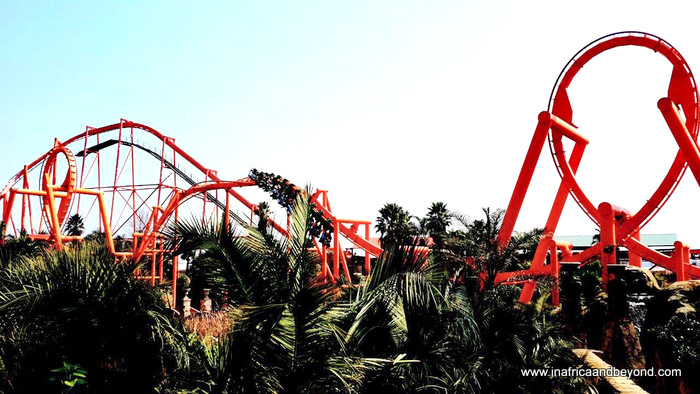Not known Details About Johannesburg North Attractions
Not known Details About Johannesburg North Attractions
Blog Article
Johannesburg North Attractions Fundamentals Explained
Table of ContentsThe 5-Minute Rule for Johannesburg North AttractionsJohannesburg North Attractions - QuestionsAn Unbiased View of Johannesburg North AttractionsThe Greatest Guide To Johannesburg North AttractionsJohannesburg North Attractions - QuestionsWhat Does Johannesburg North Attractions Mean?
The city grew on the edge of the Witwatersrand Key Coral reef, a below ground stratum of gold-bearing quartz-silica conglomerate that arcs for hundreds of miles below the Highveld - Johannesburg North attractions. Many of the gold mines in the city stopped operation in the 1970s, however in its day the Witwatersrand gold sector accounted for even more than 40 percent of the world's annual gold production.Johannesburg has a pleasant environment. Summer season temperature levels balance regarding 75 F (24 C); winter months temperatures balance concerning 55 F (13 C) and only sometimes dip below cold. The city appreciates about eight hours of sunlight per day in both winter months and summer. Rain standards about 28 inches (700 millimetres) per annum, but the total differs substantially from year to year.
What rain the city receives drops almost exclusively in the summer season months, often in spectacular late-afternoon electric storms., where many locals still count on coal for fuel.

5 Easy Facts About Johannesburg North Attractions Shown
The equilibrium of the city is inhabited by whites. Holiday accommodation differs in character and top quality. Soweto is infamous for its countless rows of municipally built, two-room matchbox homes, yet it also has a few thriving enclaves along with bristling squatter camps, where 10s of thousands live without water, power, or cleanliness centers.
Physical growth, although rather limited by transportation, proceeded promptly as migration to South Africa, and Johannesburg in specific, increased drastically. This problem was solved in the 1930s when the car was introduced in mass production to South Africa. Vehicles were, essentially, restricted to the affluent, and allowed them to relocate to the north of the city and commute into the centre.
A lot of inadequate suburbs were mixed, with poor blacks and whites living with each other, although the wealthy suburban areas were usually booked for whites.
The previous system of eleven phoned number areas was reorganised in 2006. Marshalltown, as seen from the top of the Carlton Centre. The M1 and M2 run behind the structures, and the southerly residential areas extend past the highway boundary. The central city of Johannesburg is situated within the city's Area F. The approximated population of the region is 200,000, [] but the number of individuals staying in the internal city on an informal basis is unidentified, as many are illegal aliens. A lot of higher-income citizens and white people have transferred to the north residential areas and Read Full Article have been replaced by lower-income black individuals. The unemployment, education, and age accounts of the area are all unknown, as a result of the problem of acquiring trusted information regarding the area.
The 6-Minute Rule for Johannesburg North Attractions
Yeoville and Bellevue have a mix of apartment and solitary household units on tiny lots. The region lies on a mountainous divide that runs from east to west. One of the most obvious geographical feature is Observatory Ridge, which is called for the huge observatory located on it. The recreational areas are no much longer used, due to safety issues.

Johannesburg Arena, a training ground for both the Golden Lions and Orlando Pirates, is nearby. The eastern suburban areas of Johannesburg are situated in the city's 7th Go Here [] and 9th [] areas. The area is likewise functionally incorporated with East Rand boundary towns beyond the official limit of Johannesburg, such as Bedfordview and Edenvale (both part of Ekurhuleni Metropolitan District).
Indicators on Johannesburg North Attractions You Need To Know
The eastern suburban areas are some of the earliest locations of Johannesburg, there are large areas of Jewish and various other European backgrounds, the majority of the populace is English speaking. There are three golf programs as well as a number of safeguarded ridges with viewsites.
The area is mostly composed of old "matchbox" residences, or four-room homes built by the government, that were developed to offer cheap lodging for black employees throughout apartheid. Soweto is an abbreviation, meaning "South Western Townships". Road after road in this field is lined with matchboxes; nonetheless, there are a couple of smaller sized locations where flourishing Sowetans have actually built houses that are extra similar in stature with those in more upscale residential areas.
Hostels are an additional prominent physical feature of Soweto. Originally built to house male migrant workers, many have been enhanced as homes for couples and households. The N1 Western Bypass skirts the eastern limit of Soweto. The suburban area was not historically enabled to create work centres within the area, so practically all of its locals are commuters to other components of the city.
The Single Strategy To Use For Johannesburg North Attractions
The domestic areas in the northern suburban areas are mostly official, with no significant areas of informal housing, or housing that view website does not have a long-term structure. This is an established location, there is a trend of land usage change from domestic to business, particularly along main arterial roads and around well established nodes.
The location is well attached to roadway networks, particularly along the north-south axis created by the M1 and N1. Roadways to the east and west are less well developed, as there are no highways travelling because instructions. In the direction of the northern border of the city, the density of growth decreases, leaving big locations of primitive land around Midrand.
More About Johannesburg North Attractions
, which is located on a hill overlooking the inner city and Hillbrow.
Report this page